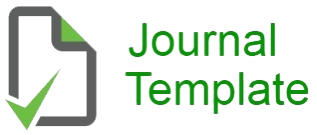THE INFLUENCE OF RICE PRODUCTION, INTERNATIONAL RICE PRICES, POPULATION, AND GROSS DOMESTIC PRODUCT (GDP) ON INDONESIA'S RICE IMPORTS
Keywords:
Rice imports, production, international rice prices, population, Gross Domestic Product (GDP).Abstract
Trading activities hold a crucial position in a nation's economy, particularly as a means of fostering diplomatic relations between countries. In the context of strategic commodities such as rice, although production has increased, this growth has not yet fully kept pace with national consumption levels, which are largely driven by the household and industrial sectors. This study aims to examine the impact of rice production, international rice prices, population size, and Gross Domestic Product (GDP) on the volume of rice imports in Indonesia during the period from 1993 to 2023, both in the short and long term. A quantitative approach was employed, utilizing annual time series secondary data over a span of 31 years. Data analysis was conducted using multiple linear regression (OLS) and the Error Correction Model (ECM). The ECM estimation results indicate that all the variables studied tend to move toward a common equilibrium in the long run, suggesting cointegration. The analysis also shows that in the short term, rice production, international rice prices, population, and GDP do not have a significant effect on rice import volumes. However, in the long term, rice production and international rice prices have a positive and significant effect on import volumes, while GDP has a negative and significant effect. On the other hand, population has a positive but statistically insignificant impact on rice imports in Indonesia during the study period. These findings suggest that optimizing domestic rice production and managing international price fluctuations are critical strategies for sustainably controlling rice import volumes. Moreover, stable economic growth significantly contributes to reducing long-term dependency on rice imports.
References
Akasumbawa, Adim, Wibowo. (2021). Faktor-faktor yang Mempengaruhi Pertumbuhan Ekonomi di Negara Dengan Jumlah Penduduk Terbesar di Dunia (Studi Pada Negara China, India, Indonesia, Pakistan, dan Amerika Serikat). Jurnal Ilmu Ekonomi, 2(1), 67-74
Ariska, F. M., & Quarniawan, B. (2021). Perkembangan Impor Beras di Indonesia. Journal of Agriculture and Animal Science, 1(1), 27-35.
Azzahra, D. M., Amir, A., & Hodijah, S. (2021). Faktor-faktor Yang Mempengaruhi Impor Beras di Indonesia Tahun 2001 - 2019. E-Journal Perdagangan Industri Dan Moneter, 9(3), 181-192
Badan Pusat Statistik. (2019). Produk Domestik Bruto. Jakarta: Badan Pusat Statistik.
. (2020). Ekonomi Indonesia 2019. Jakarta: Badan Pusat Statistik.
. (2022). Jumlah Penduduk Indonesia. Jakarta: Badan Pusat Statistik.
. (2023). Ekonomi Indonesia Triwulan IV-2023. Jakarta: Badan Pusat Statistik.
. (2023). Harga Beras Internasional. Jakarta: Badan Pusat Statistik.
. (2023). Produksi Beras Indonesia. Jakarta: Badan Pusat Statistik.
. (2023). Volume Impor Beras Indonesia. Jakarta: Badan Pusat Statistik.
. (2024). Impor Beras Menurut Negara Asal Utama 2024. Jakarta: Badan Pusat Statistik.
. (2024). Konsumsi Beras Nasional. Jakarta: Badan Pusat Statistik.
. (2024). Volume Impor Beras dari Negara Asal (2019-2023). Jakarta: Badan Pusat Statistik.
Ifantri, S & Kumara, D. Z. P. (2024). Analisis Dampak Stabilisasi Ekonomi terhadap Pembatalan Impor Beras dari India ke Indonesia pada Tahun 2023. Jurnal Ilmu Sosial dan Ilmu Politik, 13(2).
Indriani & Purwito, A. (2016). Ekspor, Impor, Sistem Harmonisasi, Nilai Pabean, dan Pajak dalam Kepabeanan. Yogjakarta: Mitra Wacana Media.
Kementerian Keuangan Republik Indonesia. (2023). Strategi Kebijakan Ekspor-Impor Dalam Mengamankan Rantai Pasokan Pangan. Diakses di https://www.kemenkeu.go.id/single-page/apbn-2018/ tanggal 13 Maret pukul 09:30 WIB
Kementerian Perdagangan. (2023). Analisis Kinerja Perdagangan Beras. Jakarta: Pusat Data dan Sistem Informasi Pertanian Kementerian Pertanian.
Mahendra, A. I., Nasution, I. A., Naufal, M. F., & Wikansari, R. (2023). Dampak Pandemi Covid-19 Terhadap Volume Ekspor Dan Impor Beras di Indonesia. Jurnal Ilmu Ekonomi (JIE), 2(3), 11–18.
Mangeswuri, D. R. (2023). Tren Kenaikan Harga Beras Dan Strategi Menurunkannya. Kajian Singkat Terhadap Isu Aktual dan Strategis, 15(18).
Mantra, Ida Bagus. (2003). Demografi Umum (Edisi kedua). Yogyakarta: Pustaka Pelajar. Purwandari, R.E., Adhitya, B., Fatmawati, A. (2024). Analisis Faktor-Faktor Yang Mempengaruhi Impor Beras Di Indonesia. Prosiding Seminar Nasional Ilmu Ekonomi
Pamungkas, B. A., De Fretes, C. H. J., & Hergianasari, P. (2023). Kebijakan Pemerintah Indonesia Dalam Impor Beras Tahun 2021. ADMINISTRAUS: Jurnal Ilmu Administrasi Dan Manajemen, 7(2), 1–13.
Purwowidodo. (1983). Teknologi Mulsa. Jakarta: Dewaruci Press.
Puspitasari, N., Indrawati, L. R., & Sarfiah, S. N. (2018). Analisis Pengaruh Harga Beras, Cadangan Devisa, dan Rata-rata Konsumsi Beras per Kapita Seminggu Terhadap Impor Beras di Indonesia Tahun 2008 - 2017. DINAMIC : Directory Journal of Economic, 1(1), 55-67.
Putra, M. S., Adiyadnya. (2013). Analisis Pengaruh Inflasi, Kurs Dollar Amerika, Suku Bunga Kredit dan Utang Luar Negeri Terhadap Cadangan Devisa Indonesia Tahun 1996-2015. Jurnal Riset Akuntansi, 7(1).
Putri, K. Z. (2021). Analisis Faktor Yang Mempengaruhi Impor Beras Di Indonesia Tahun 2000–2019, Jurnal Ekonomi dan Manajemen, 19(2), 195-204.
Putri, N. A., Roro, R., Putri, A., Internasional, P., Asean, W., Politeknik, R. R. T., & App, N. (2024). Dampak Pemberhetian Ekspor Beras Dari Negara-Negara Pengekspor Utama Terhadap Ketahanan Pangan Indonesia. Jurnal Amik Veteran, 4(1), 107-114.
Sani, Y., Hodijah, S., & Rosmeli, R. (2020). Analisis impor beras Indonesia. E-Journal Perdagangan Industri Dan Moneter, 8(2), 89-98.
Sari, R. K. S. (2014). Analisis Impor Beras di Indonesia. EDAJ, 3(2).
Sihono, T. (2009). Dampak Krisis Finansial Amerika Serikat Terhadap Perekonomian Asia. Jurnal Ekonomi & Pendidikan, 6(1), 01-20.
Singgih, Vita Agustarita & Sudirman, I. W. (2015). Pengaruh Produksi, Jumlah Penduduk, DPD Dan Kurs Dollar Terhadap Impor Jagung Indonesia. E-Jurnal EP Unud. 4(2), 71- 79.
Siregar, R.F. (2022). Analisis Faktor-Faktor Yang Mempengaruhi Impor Beras Di Indonesia Tahun 1998-2020. Jurnal Universitas Islam Indonesia, 20(1), 11-20
Suandari, N. W. A., & Ayuningsasi, A. A. K. (2017). Pengaruh Jumlah Penduduk, Inflasi, dan Cadangan Devisa Terhadap Impor Beras di Indonesia Periode Tahun 1099 - 2017. E-Journal EP Unud, 10(4), 1360-1391.
Downloads
Published
Issue
Section
License
Copyright (c) 2025 INTERNATIONAL JOURNAL OF ECONOMIC LITERATURE

This work is licensed under a Creative Commons Attribution-NonCommercial-ShareAlike 4.0 International License.
INTERNATIONAL JOURNAL OF ECONOMIC LITERATURE © 2023 by Adisam Publisher is licensed under CC BY-SA 4.0







